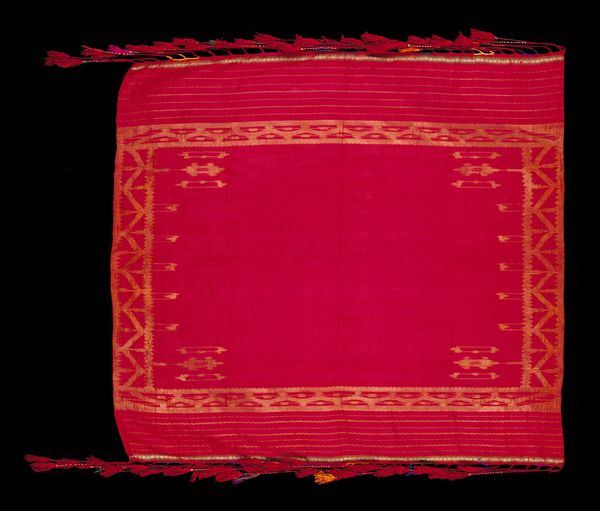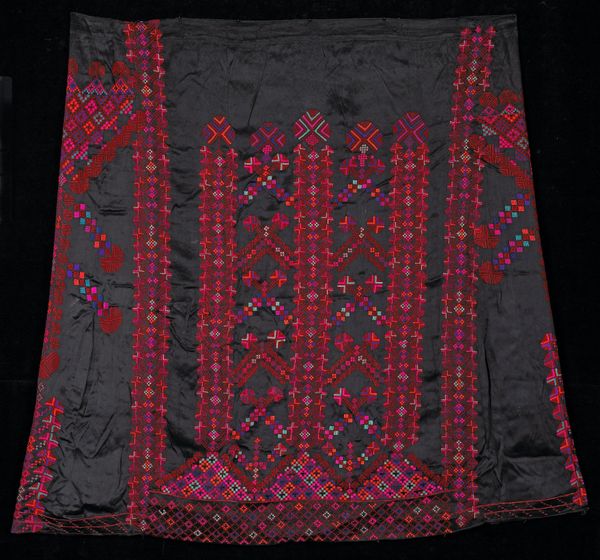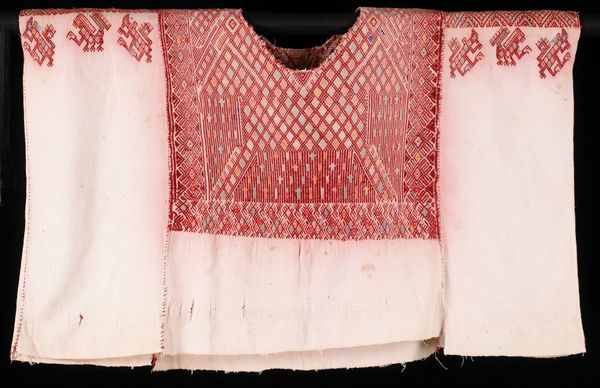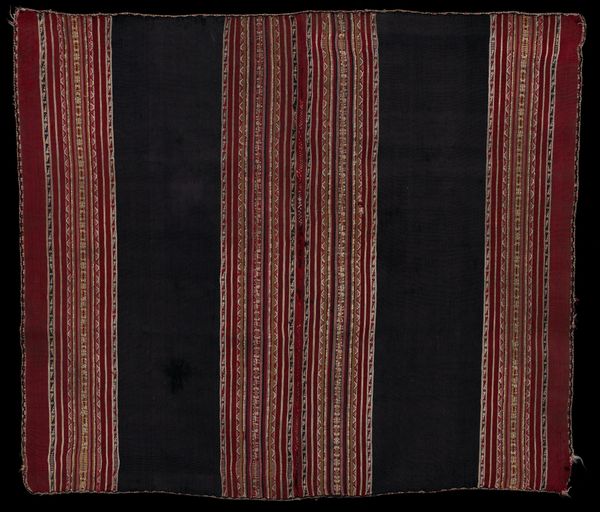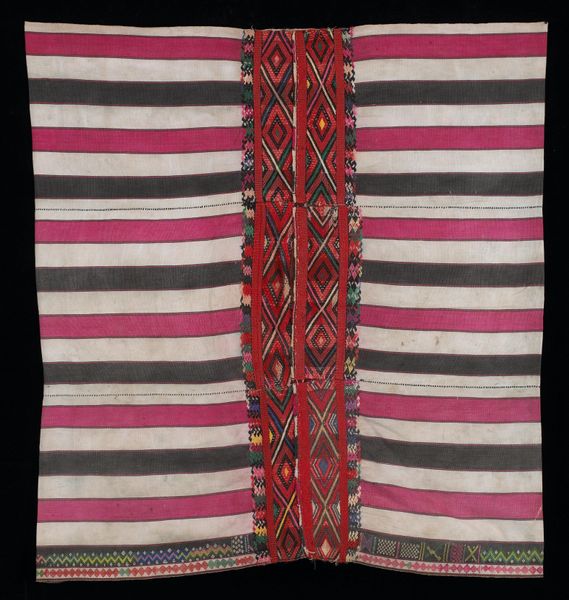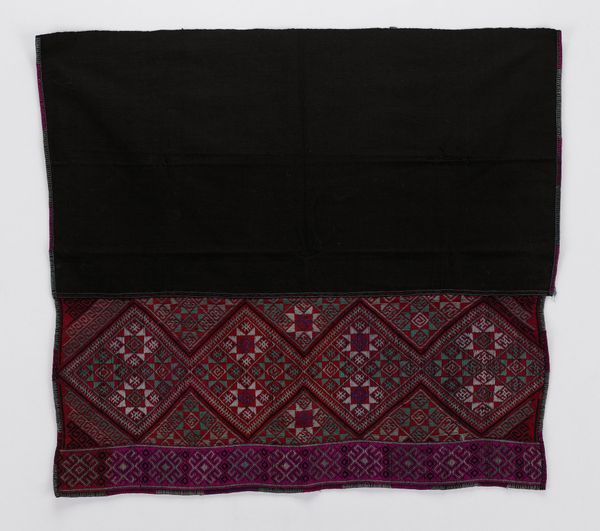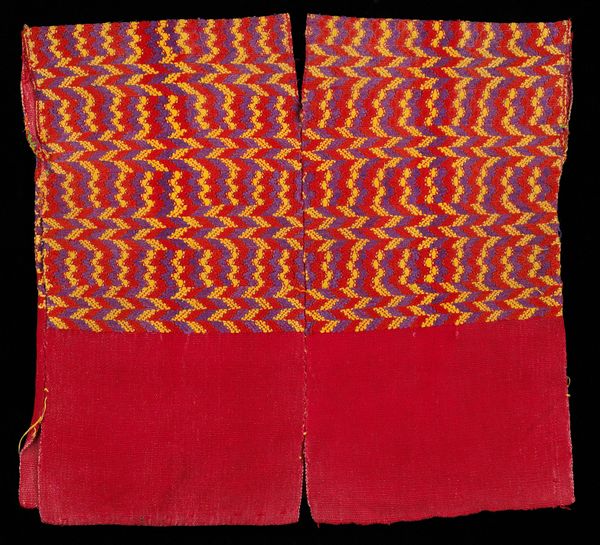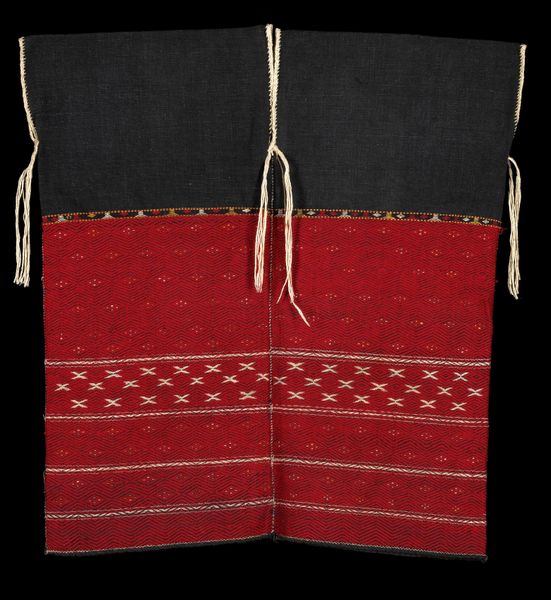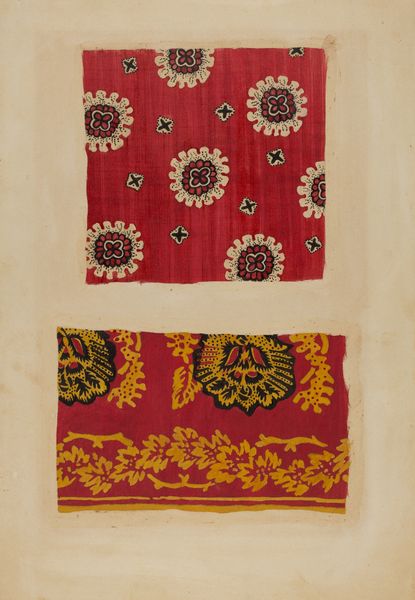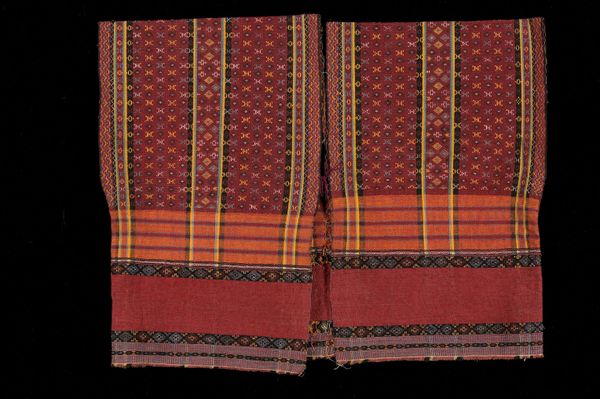
weaving, textile, cotton
#
weaving
#
textile
#
geometric
#
cotton
#
indigenous-americas
Dimensions: 14 7/8 x 14 5/8 in. (37.78 x 37.15 cm)
Copyright: Public Domain
Editor: Here we have a Girl's huipil, likely from the 20th century. It's a textile, probably cotton, with very vibrant geometric patterns. The pink bottom portion feels so innocent compared to the complex patterns up top. How do you interpret this piece? Curator: The huipil is more than just clothing; it's a powerful form of cultural expression, especially for Indigenous women. We need to consider the ways that Indigenous communities throughout the Americas have historically employed woven textiles as sites for encoding cultural memory and articulating complex symbolic meanings in the face of colonization. Do you notice the way the geometric designs become progressively more dense and concentrated towards the top? Editor: Yes, now that you mention it, it does seem more intentional. Curator: These dense, geometric patterns aren't simply decorative; they can be read as coded visual narratives. Each symbol and color choice can be connected to social, political, or spiritual beliefs unique to the weaver's community. To really understand this, we’d need to consider what community produced this huipil and how the wearer’s identity and role is expressed through textile patterns. Editor: So it is communicating much more than simply the wearer's preference for pink! It speaks to the importance of indigenous women finding ways to keep their cultural heritage alive, and it holds resistance, pride, and beauty together. Curator: Exactly. And remembering that garments like this are not simply textiles. The huipil functions as a testament to the agency and creativity of indigenous women artists within the context of power structures. Editor: I’m walking away with a richer view. It's definitely not *just* a beautiful garment; it's a whole language! Curator: Precisely!
Comments
No comments
Be the first to comment and join the conversation on the ultimate creative platform.
